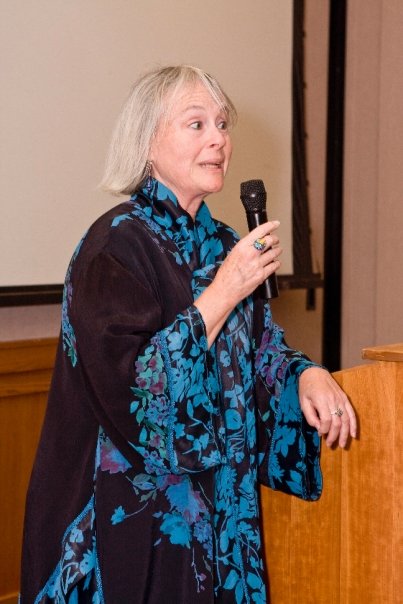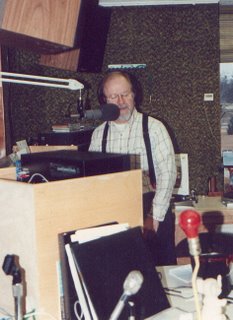Transition Into Independent Programming
The 1970s started with a bang. The momentum of the Civil Rights Movement, the global student protests, and opposition to the Vietnam War are still rolling strong. The changes brought on by these movements had an enormous impact on WHUS.
With the upgrade in 1972 of our transmitter and antenna’s capacity from 1,250 watts to 3,200 watts, our coverage area expanded to 75 miles. At some point in this decade, we stopped using our AM channel.

Before the 1970s, we stuck to a traditional top 40 format with our music. But after half a century of the same format… in the fall of 1970, we embraced a more alternative approach. What did this look like?

First, a big part of WHUS history has always been our collaboration with other organizations and producers. In the 1920s, this was rebroadcasting WTIC content. In the 1960s, this meant gaining access to the United Presses News Service as well as CBS’s. But now, programming starts to come in from other smaller stations and individuals as opposed to mainstream news. Programs received from other stations are called syndicated programming.

An example of syndicated media was the Eccustie Research Project, which was “an in-depth study of avant-garde and contemporary music, using electrical acoustical instruments, human voices, and taping devices,” according to a 1971 Daily Campus article. “Keyboard Classics” featured recordings of famous pianists. WHUS also reinstated classical music after a year-long hiatus. Station manager Les Morrell (manager from 1967 to 1971) helmed the transition.
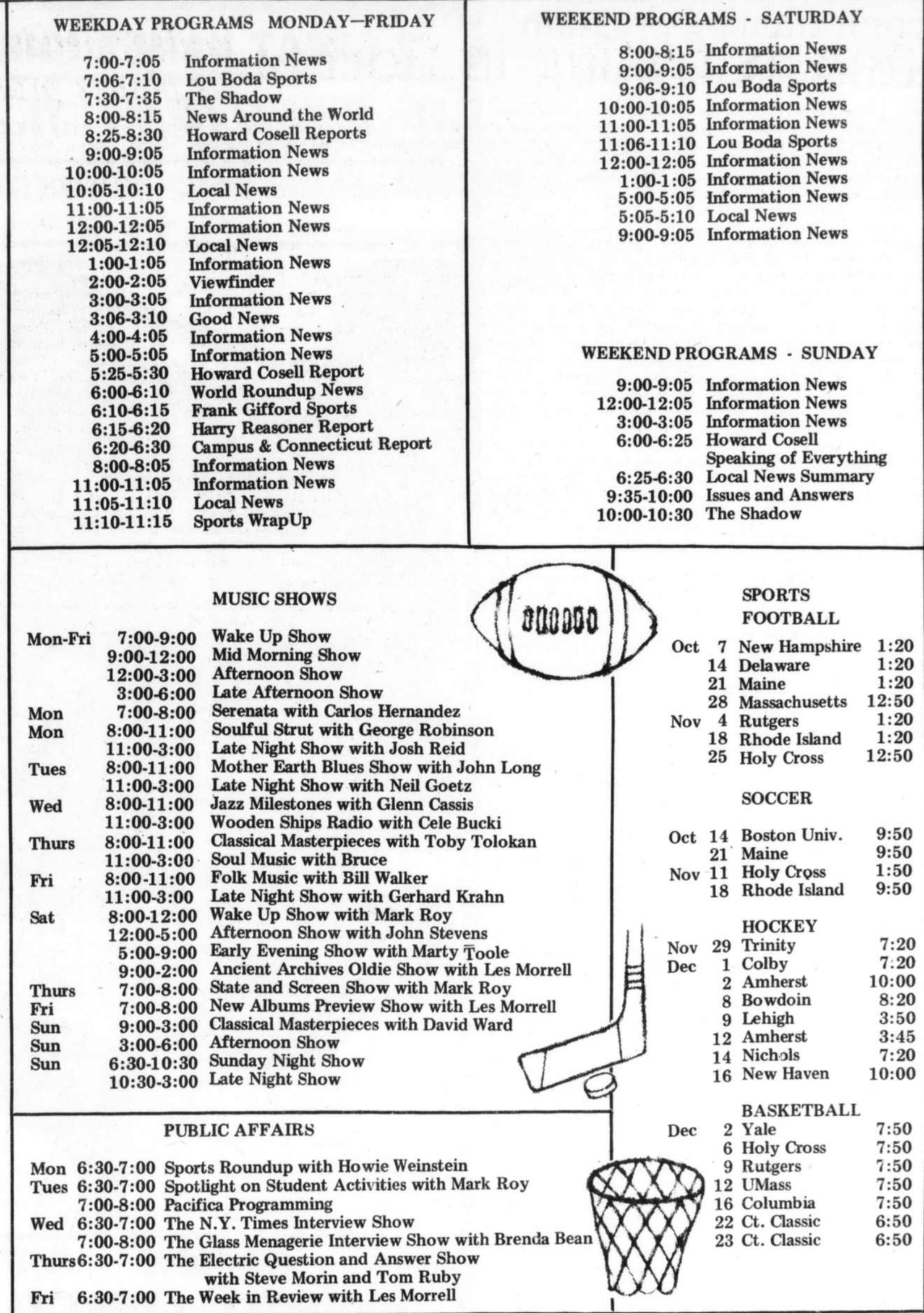
Joining the Pacifica Affiliate Network
We also joined the Pacifica Affiliate Network in 1977. The Pacifica Affiliate Network emerged as a collective of radio stations committed to bolstering grassroots journalism, nurturing community radio, and seeking to promote social justice in its productions. Pacifica created and distributed programs to members of its network. Pacifica shows were on discussions on topics like witchcraft, radical politics, and the theater of the absurd, and later, they created Democracy Now!
Evolving Voices: Embracing Diversity Amidst Challenges
With the advent of the civil rights movement, WHUS’s culture transformed to include more unheard voices and viewpoints. Black people and women had to fight for representation at the station.
Black Media
In 1973, Glenn Cassis and Gary King, with the backing of the Organization of Afro-American Students (OAAS), created “Black Media.” The public affairs show led to the creation of the Black Programming Coordinator position and served as a springboard for Black public affairs and musical broadcasts. In a 1973 Daily Campus article, King said black media was organized because of UConn’s rural and isolated environment as well as to keep the black community informed of local and national news.

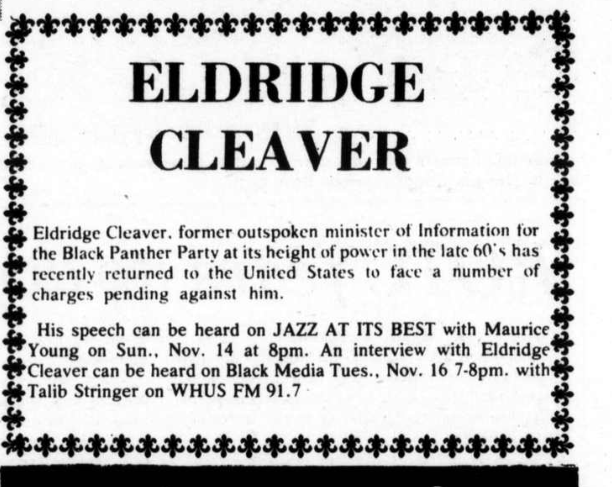
In April of 1974, Black students held a sit-in at Wilbur Cross Library. The sit-in was part of a larger campaign to demand better resources and representation on campus. WHUS signaled the protest at Gulley Hall with airing James Brown’s – The Big Payback!
The Women’s Radio Collective
1976: More than a dozen students from different organizations disrupt WHUS Executive Board meeting and demand that woman have an equal role in determining WHUS’s affairs and programming. The organizers of the protest were from the Women’s Radio Collective and had procured a petition with over 800 signatures from Mansfield residents and students.
“We will be quiet if you add to your agenda that women are not represented on your executive board.”
Bessi Rayna, founder of the Women’s Center in a April 1976 DC article
This led to more representation of women in the station’s staff and programming. The Women’s Radio Collective produced shows that included “Half the World is Women,” an audio documentary series about women’s history, “Face the Music,” which highlighted female artists, “Women News,” and “Womanspace,” a live news segment dedicated to women’s issues and current affairs. Below is two “Face the Music” playlists.
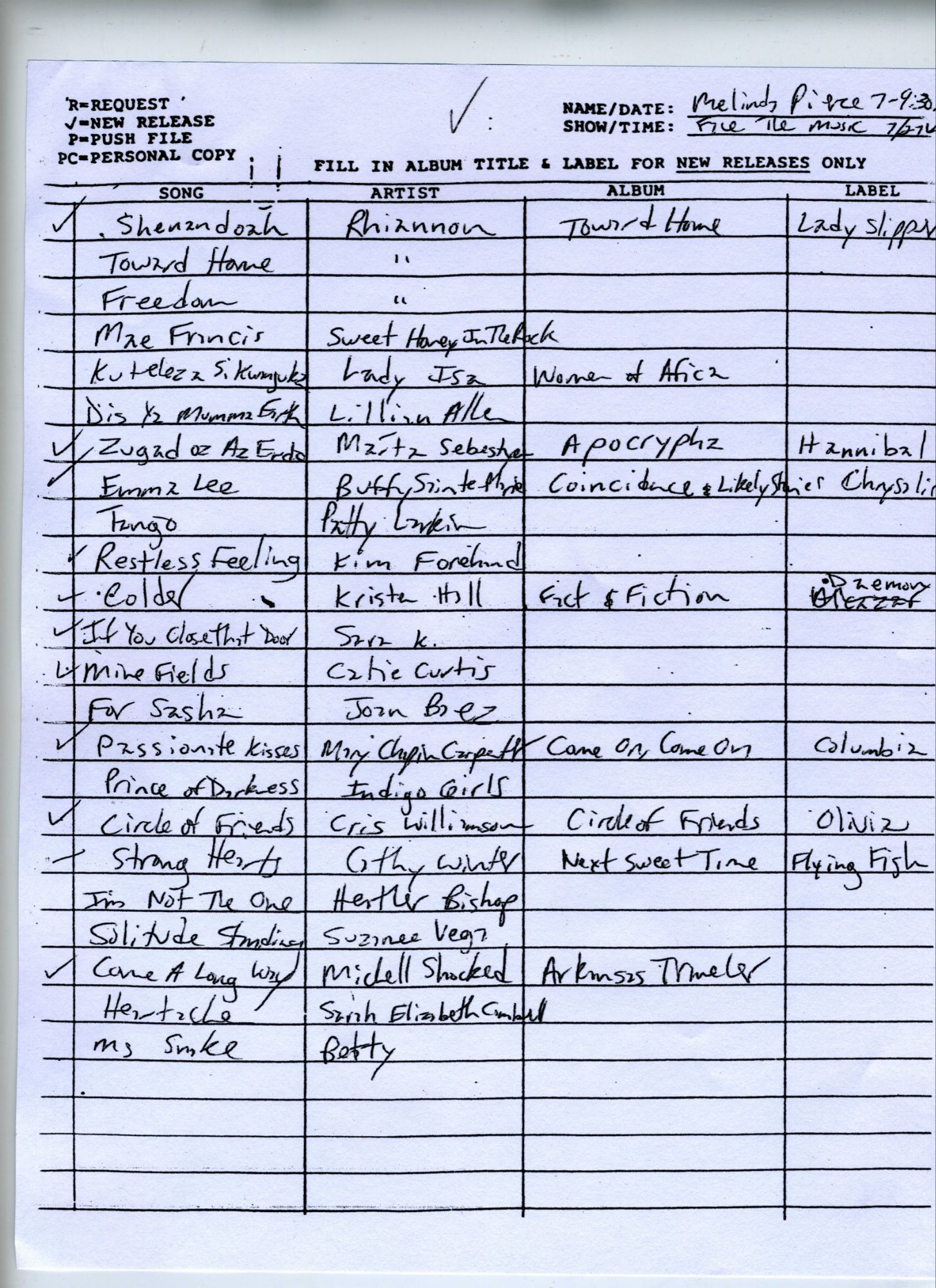

The Women Radio’s Collective successfully advocated for initial and equal coverage of women’s basketball broadcasting in a time when only men’s basketball was covered by the station.
Upgrades and Community Involvement
One of the biggest influences on WHUS’s culture was the decision to involve community members. We already could reach three different states with our transmitters, but we restricted involvement to students until 1979.
1978: With the station’s expansion of programming, including the introduction of Pacifica connections, as well as financial troubles, WHUS starts to deliberate the creation of a manager role. In addition, the station wanted to broadcast 24/7 on 91.7 FM, but didn’t have enough students who wanted to stay overnight. (Remember that CMFCL, or our previous automated broadcasting system, could not operate on the FM channel due to an FCC rule requiring in-person operation of FM channel). The staff would create a commission board in collaboration with the university to search for a non-student manager who could put the station back on track.

1979: John Murphy is hired as the general manager. To fulfill the station’s dreams of 24/7/365 broadcasting, he convinced the station to allow community members, or non-undergraduate students, to join the station.
The decision to do so set forth a transformation of WHUS that can still be felt today. See below for some community members who have had a lasting impact on the station.
In 1979, then-high school teacher Susan Forbes Hansen picked up the Sunday Night Folk Festival show from a series of student hosts. The show has now been on for 45 years and is our longest-running show.
Since then, Susan has MC’d the Hartland Folk and the CT Family Folk Festivals, hosted a show on WFCR, and has been an advocate for local folk music.
Before 1982, we did not have bluegrass. Bud Godreau came to the station then and started up The Magic of Bluegrass. It ran from 1982 to 1994, when new hosts Neil Russ, Marcel “Ye Ole Coyote” Huguenin and Cathy Bumgarner.
AUDIO
In November 1972, news department member Mark Roy, along with Howard Weinstein, covered the entirety of election night (Nixon). Those are split into the three audio tapes below. “Included in the election coverage are a number of background pieces prepared by staff of WHUS news – and many members of the WHUS staff at the time went to local polling places to report the results of local elections,” according to Mark Roy.
More audio can be heard below.
